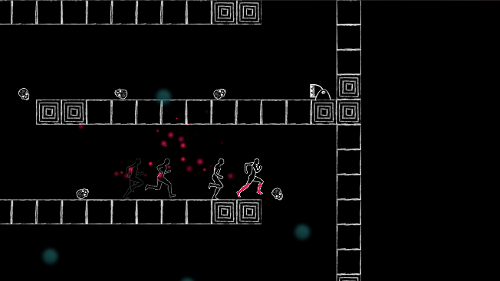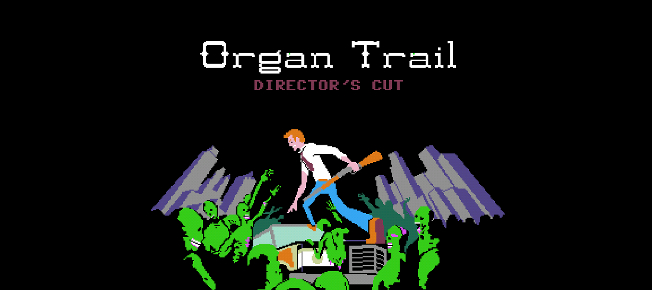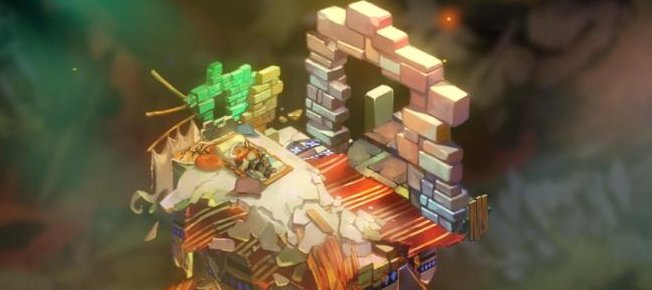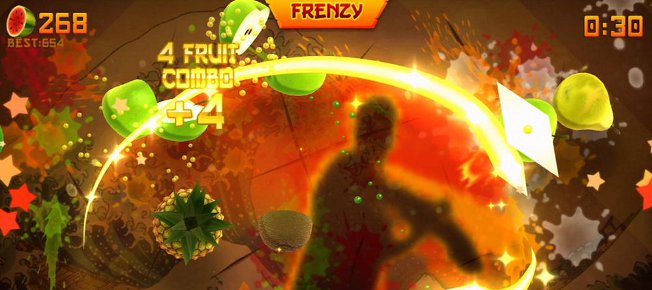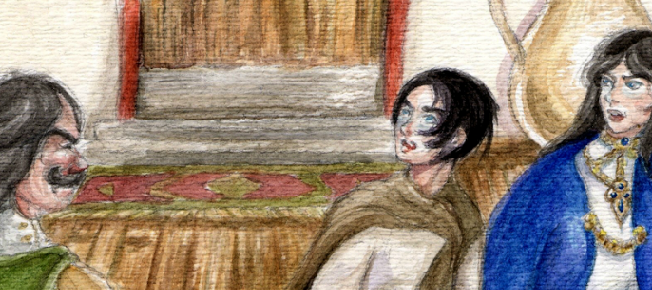The concept of video games as an artistic expression is certainly not a new one. Aside from the obvious representations in the artwork or music, some games try to tell a story through the gameplay. A prime example would be Braid which debuted a few years ago and told the story of the protagonist through the various uses of time manipulation. Today, Bit By Bit Games has released Indie Games Festival 2012 candidate Trail, a PC game that represents life and death through platforming.
The hook of Trail is its representation of both life and death. When you begin, your character is alive in a rather drab, minimalist game world with a solemn musical background. As you hop from platform to platform, wall jump, and avoid dangers like moving blocks and electric arcs, your character will leave behind ‘memories’ represented by a blue-colored orb. You have a health meter so you have to make sure not to be too sloppy when dodging the environmental obstacles. The further you make it in the game before your meter runs out or you fall, the older your character is when you die.
At the moment of the death is when the game world is turned around on you. The background is now a stark black and you begin this stage of your life at the point where you died. Your attachment to the life you left behind is represented by the need to recollect those memories and return to where you began. The ‘memories’ are just where you left them, however they will start to move out of your reach as you get close. The more of these ‘memories’ you collect, the more fulfilled your life will have been. If you fail to make it back to the first memory, though, your life will be considered incomplete. No matter how you do, you’re given a score and age based on your performance. You’re also given a textual representation – almost like a eulogy - indicating how good a life your character lived. I won’t spoil any of these summaries for those who might play the game.
The platforming in the game is pretty standard and simple. You can walk (or run) and jump. As with any platformer it takes a little bit to figure out how to properly control and time jumps from one platform to another, some of which move. I think it would’ve been a bit easier to play with a controller rather than a keyboard, but after a few levels landing those jumps becomes a lot more natural.
Trail was not intended to be a dense, lengthy experience. There are in fact only five levels to play that are randomly chosen. It’s more of a concept project for Matthew Hanlon and Kieran Nee whom are both former Lionhead developers. Perhaps that’s why the game is completely free. It’s not the kind of game you’re going to play for a long time or keep coming back to for weeks or months, but it’s a bite-sized artistic representation of a concept that we are all familiar with. There’s really no excuse not to go check it out for yourself by downloading it here.
© 2011 – 2013, The Indie Mine. All rights reserved.

